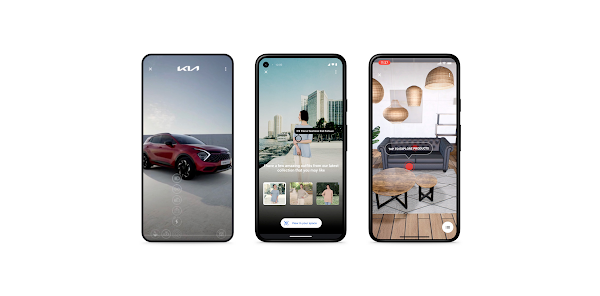Last year at Google I/O, we announced the preview of Immersive Stream for XR, which leverages Google Cloud GPUs to host, render, and stream high-quality photorealistic experiences to millions of mobile devices around the world. Today, we are excited to announce that the service is now generally available for Google Cloud customers.
With Immersive Stream for XR, users don’t need powerful hardware or a special application to be immersed in a 3D or AR world; instead, they can click a link or scan a QR code and immediately be transported to extended reality. Immersive Stream for XR is being used to power the “immersive view” feature in Google Maps, while automotive and retail brands are enhancing at-home shopping experiences for consumers, from virtually configuring a new vehicle to visualizing new appliances in the home.
What’s new with GA
With this latest product milestone, Immersive Stream for XR now supports content developed in Unreal Engine 5.0. We have also added the ability to render content in landscape mode to support tablet and desktop devices. With landscape mode and the ability to render to larger screens, there is more real estate for creating sophisticated UIs and interactions, for more full-featured immersive applications. Finally, you can now embed Immersive Stream for XR content on your own website using an HTML iframe, allowing users to access your immersive applications without leaving your domain.
How customers are using Immersive Stream for XR
A common type of experience our customers want to create is a ‘space’ where users can walk around and interact with objects. For example, home improvement retailers can let their shoppers place appliances options or furniture in renderings of their actual living spaces; travel and hospitality companies can provide virtual tours of a hotel room or event space; and museums can offer virtual experiences where users can walk around and interact with virtual exhibits. To help customers create these experiences faster, we collaborated with Google Partner Innovation (PI) to create a spaces template, the first of a series of templates developed with close customer involvement within the PI Early Access Program. The spaces template standardizes the common interactions across these scenarios, such as user movement and object interaction.
Aosom, a home and garden ecommerce retailer, recently used this template to launch an experience that allows users to place furniture in either a virtual living room or in their own space using AR. Users have the ability to customize the item’s color and options, then add products to their shopping cart once satisfied.
“Home & Garden shoppers are always looking for offerings that are unique and compatible with their own living space,” said Chunhua Wang, Chief Executive Officer, Aosom. “Google Cloud’s Immersive Stream for XR has enabled Aosom to deliver a visually vivid and immersive shopping experience to our customers.”
Immersive Stream for XR especially benefits automakers, who can now enable prospective buyers to browse and customize new vehicles in photo realistic detail and visualize them in their own driveway. Most recently, Kia Germany leveraged the technology to promote the Kia Sportage, one of their top selling vehicles. The virtual experience was accessible via a QR code on the Kia website.
“At Kia Germany we are excited to use Google Immersive Stream for XR to reach new consumers and provide them the perfect experience to discover our Sportage,” said Jean-Philippe Pottier, Manager of Digital Platforms at Kia Germany. “Our users love that they can change colors, engines, and interact with the model in 3D and augmented reality.”
Last, with the addition of Unreal Engine 5.0 and support for bigger and more realistic worlds, users have the ability to explore far away historical landmarks without leaving their home. For example, Virtual Worlds uses photogrammetry techniques to capture historical sites, polish them with a team of designers, and then create interactive experiences on top. Because of the visual detail involved, these experiences have historically required expensive workstations with GPUs to perform the rendering, limiting their availability to physical exhibits. Using Unreal 5.0’s new Nanite and Luman capabilities, the team created an educational tour of the Great Sphinx of Giza, and made it accessible by anyone using Immersive Stream for XR, available here.
Elliot Mizroch, CEO of Virtual Worlds, explains, “We’ve captured incredible sites from Machu Picchu to the Pyramids of Giza and we want everyone to be able to explore these monuments and learn about our heritage. Immersive Stream for XR finally gives us this opportunity.”
Next steps
We’re excited to see all of the innovative use cases you build using Google Cloud’s Immersive Stream for XR. Learn more by reading our documentation, or get started by downloading the Immersive Stream for XR template project.
To get started with Unreal Engine 5.0 and landscape mode, you can download our updated Immersive Stream for XR template project, load it into Unreal Engine 5.0.3, and start creating your content. If you’d like to embed your experience on your own website, you can contact us to allowlist your domain.
Cloud BlogRead More


